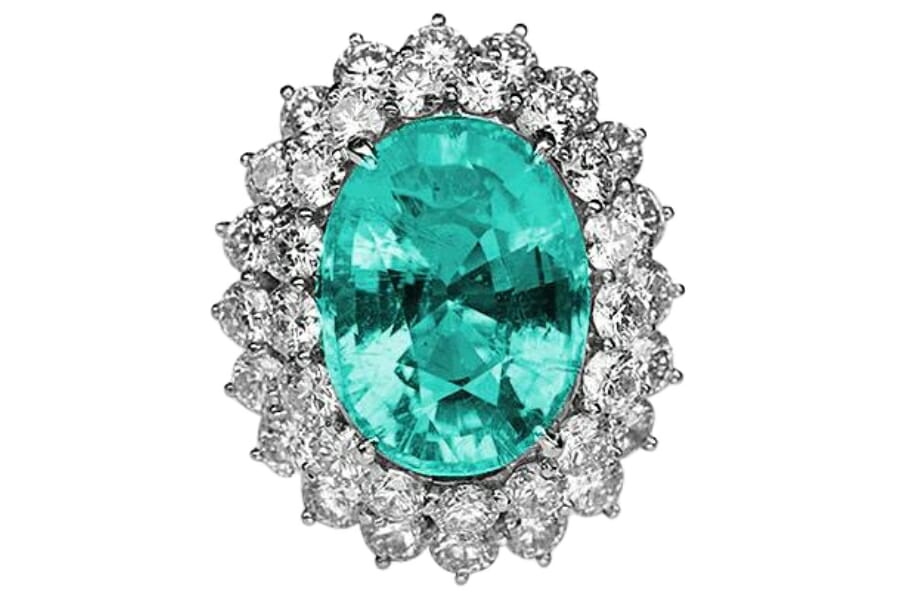Tourmaline, a gem with many beautiful colors, has been catching people’s eyes and hearts for hundreds of years. It’s remarkable not just because of how it looks but also how it’s made and what it can be used for.
Unlike what most people think, tourmaline’s value isn’t just based on how it looks. Price is also affected by its rarity, origin, and quality. But how can we figure out how much this colorful wonder is really worth?
Don’t let the price tell you how valuable it is! Everyone can find something they like about tourmaline, whether it’s the enchanting kaleidoscope of colors or a rare find. So, let’s explore what makes this gemstone more than just a pretty face and a true treasure.
What Tourmaline Is
Tourmalines are the chameleons of the gemstone world. These stunning stones come in a rainbow of colors; sometimes, you’ll even find multiple hues in a single gem!
From rich blues and vibrant pinks to earthly browns and even dazzling multicolored specimens, tourmalines are truly Mother Nature’s kaleidoscope.
They’re not just a feast for the eyes, these gems have a fascinating chemical composition that includes boron silicate mixed with various elements. This complex composition gives each tourmaline its unique color fingerprint.
But that’s not all! Tourmaline also has some interesting scientific properties. They’re pyroelectric, meaning they can make an electric charge when heated or cooled. They’re also piezoelectric because they can produce electricity when under pressure.
We have written down the prices for each kind of tourmaline. These are the most common, but they aren’t the only ones.
Elbaite
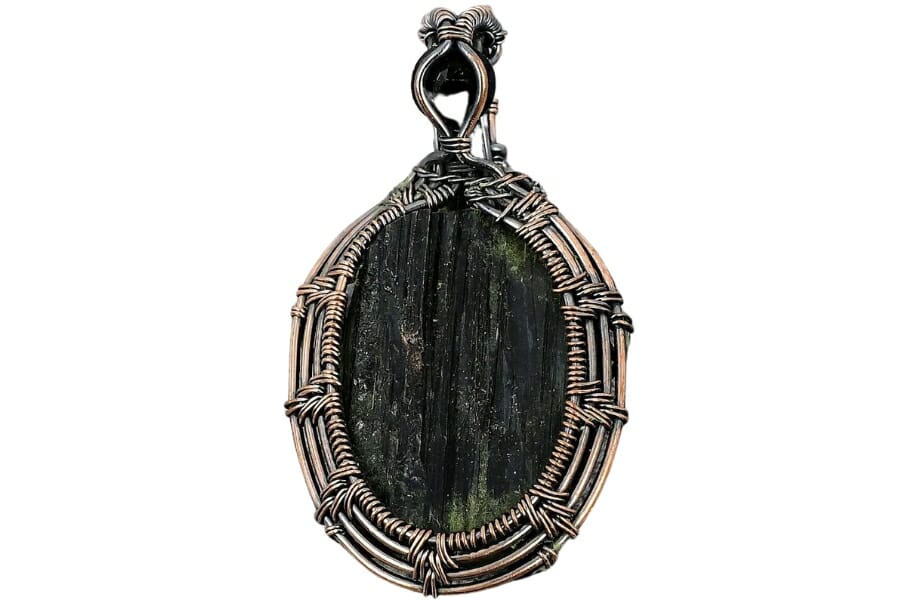
Elbaite is the superstar of the tourmaline family, flaunting an extraordinary range of colors from delicate pinks and blues to vivid greens and reds. Elbaite gems often exhibit rich hues that make them highly desirable for jewelry.
Elbaite is unique because it can show many different colors in a single crystal, making pieces that look like tiny rainbows trapped in stone. It also has an interesting story behind it. Its crystalline structure allows different trace elements to be present, giving it rainbow colors.
Each type has its personality that keeps giving, making each encounter a feast for the eyes and the soul.
How much is an Elbaite worth
More common colors of Elbaite can range from $50 to $550 per carat, depending on their quality. On the other end of the spectrum, the much coveted Paraiba tourmaline (a type of Elbaite) can fetch astronomical prices for as high as $10,000 per carat. Talk about expensive taste!
Dravite
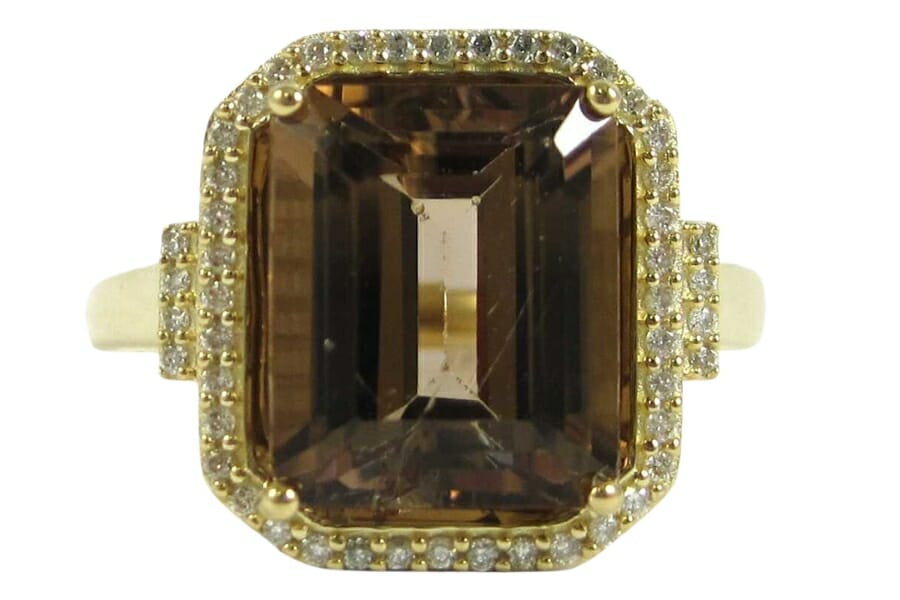
Dravite tourmaline may not be as well-known as its colorful cousin, Elbaite, but it has its quiet beauty. Dravite usually comes in earthy colors like brown, olive green, and dark yellow.
It has a natural, grounded feel that makes it stand out. It’s a popular choice for those who like a more subdued color scheme and for collectors interested in the different kinds of tourmaline minerals.
Even though it’s not usually the main focus of high-end jewelry, its natural colors make it a popular choice for rustic or bohemian styles. Don’t be fooled by Dravite’s simple look; it can have beautiful clarity and be cut to bring out its natural shine.
How much is a Dravite worth
The value of Dravite tourmaline is generally more modest than some other, more colorful members of the tourmaline family. The price per carat can range between $50 to $100 for better quality pieces.
Liddicoatite
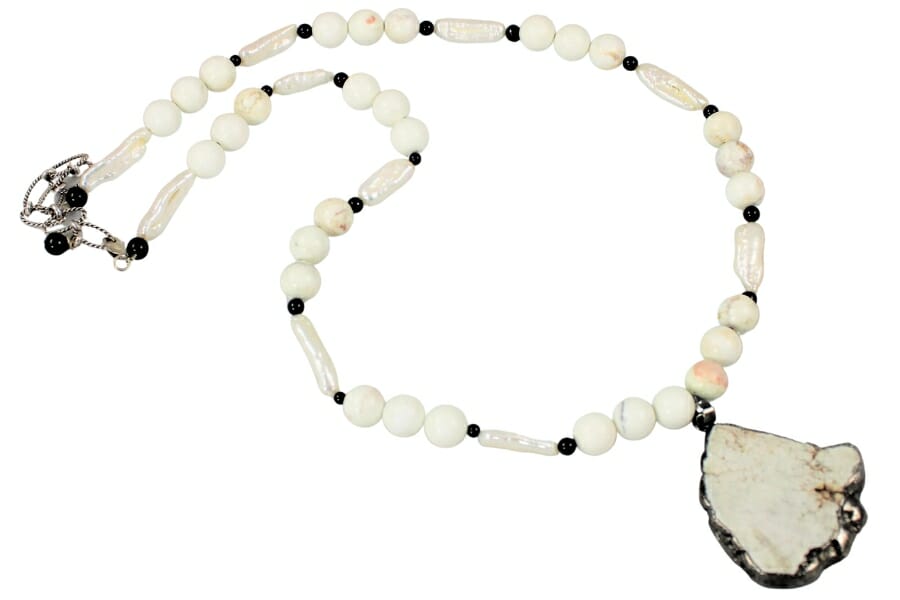
Liddicoatite is known as the “diva” of tourmalines because of its high drama, bright colors, and complex zoning. This rare gemstone was named after a gemologist, Richard T. Liddicoat. It often has complex patterns, including pink, green, blue, and even black, all in the same crystal!
The above natural artistry makes it a top choice for collectors and fans who want unique pieces. Its vibrant colors and unusual shapes make it a popular choice for jewelry that makes a statement, especially when the color zoning is eye-catching.
How much is Liddicoatite worth
The price of a Liddicoatite varies based on a range of factors, particularly its color zoning. Its price can fluctuate significantly depending on its appeal to this niche audience. More often, it can go from $75 to $150 per carat.
Schorl
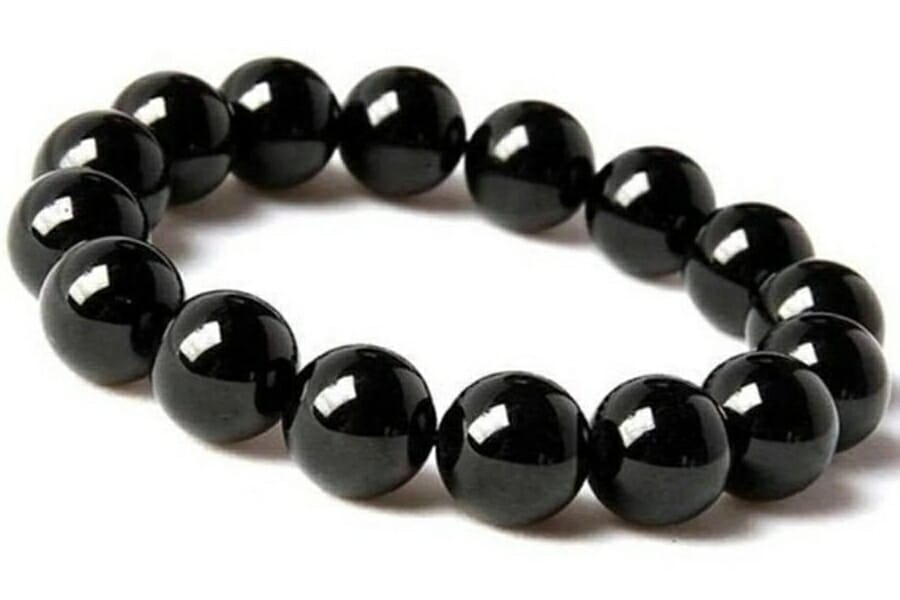
Schorl, the black sheep of the tourmaline family (literally!), is far from just a dark horse in the world of gemstones. Although it may not boast the vibrant colors of its tourmaline siblings like Elbaite or Paraíba, Schorl has all its mysterious charm.
Making up the majority of tourmalines found worldwide, this black or deep brown variety has a striking presence that commands attention. Often opaque, Schorl’s dark hue absorbs light rather than reflecting it, giving it a unique, enigmatic quality.
It’s frequently used in jewelry pieces where contrast is desired, and it has a special resonance for those who prefer a more gothic or minimalist aesthetic.
How much is a Schorl worth
Schorl is generally one of the more affordable varieties within the tourmaline family. It ranges between $25 to $60 per carat for exceptional qualities or higher clarity and interesting formations.
Uvite
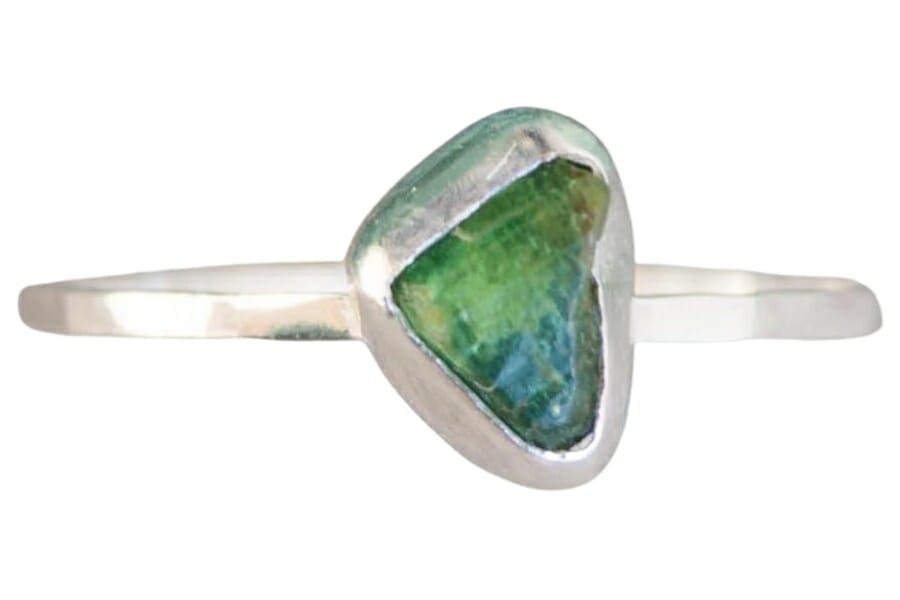
Uvite is a fascinating member of the tourmaline family. It’s usually a rich range of colors from green to brown, but it can also be found in other colors like red or black.
This gemstone is less common than other tourmalines like Schorl or Elbaite, which makes it a true collector’s item. It’s named after the Uva Province in Sri Lanka, where it was first found.
Its crystal structure usually forms interesting, well-defined geometric shapes that please mineralogists and gem lovers. Even though uvite isn’t used as often in jewelry as other tourmalines, its unique beauty makes it very popular for custom pieces and collections.
How much is Uvite worth
Since Uvite isn’t as common as other types of tourmaline, it can fetch a higher price, especially if it has a lot of color and good clarity. Prices could range from $50 to $300 for high-quality stones.
Watermelon Tourmaline
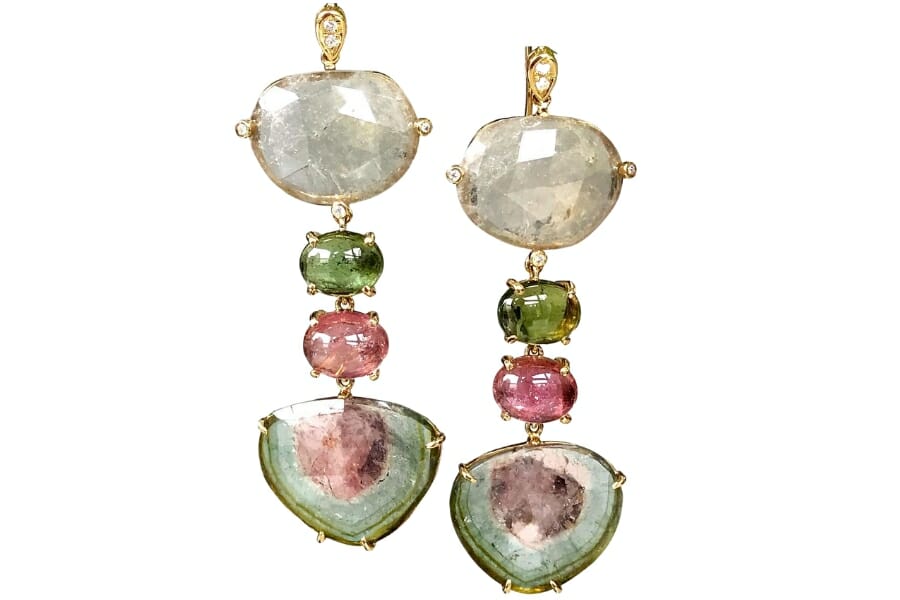
Imagine biting into a juicy slice of watermelon on a hot summer day. That’s what watermelon tourmaline is like. This fun gemstone is a feast for the eyes with its striking two-color or three-color zones that look like the pink flesh and green rind of a real watermelon.
It’s not your typical multicolored stone. Its colors are separated, making it a favorite among collectors and people who want a unique piece of jewelry that stands out.
Each slice, whether in a necklace, earring, or ring, adds a splash of summery vibes that can make any outfit look better.
How much is Watermelon tourmaline worth
Prices for watermelon tourmaline can go up as high as $150 to $450 per carat for high-quality pieces with bright, well-defined colors and sound clarity.
Why Tourmaline Is So Expensive
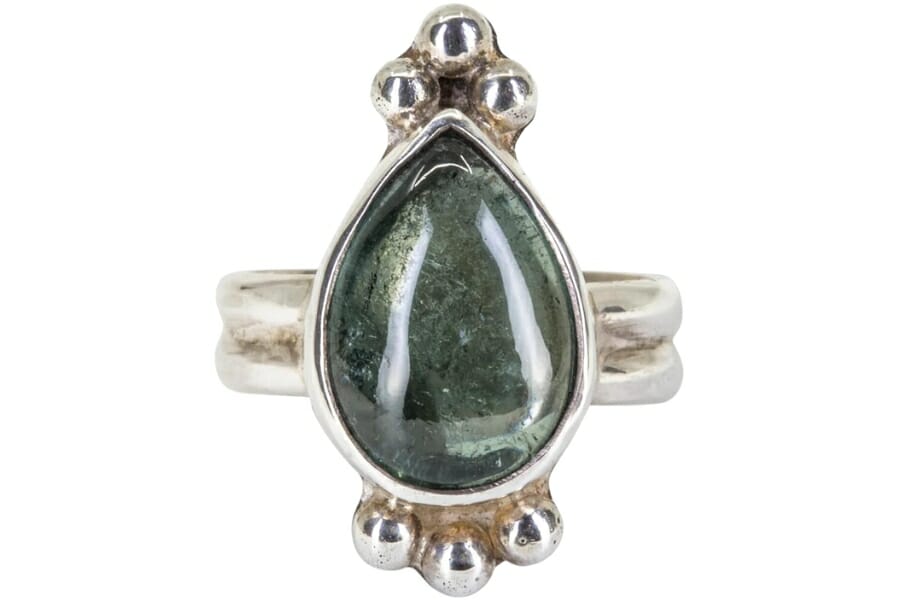
The beauty of tourmaline is as many-sided as the crystal itself. It’s a gemstone that attracts both experts and casual admirers. The first thing you notice about it is the rainbow of colors.
From the soft pinks and blues of elbaite to the mysterious black of Schorl, tourmaline is a show of nature’s colors. It can look so much like other stones that it has names for each color: rubellite for red ones, indicolite for blue ones, and so on.
And let’s not forget the beautiful watermelon tourmaline, which has a bright pink center and a green ring around it!
But there’s more to tourmaline than just how pretty it looks. This gem is special because it has an electric charge and can even change how light moves.
Also, it can be used in various settings and styles, from vintage to modern. This makes it a favorite among jewelers and designers. Whether the color or the science, it has something for everyone. This makes it one of the world’s most loved and valued gemstones.
How To Determine The Value Of Tourmaline
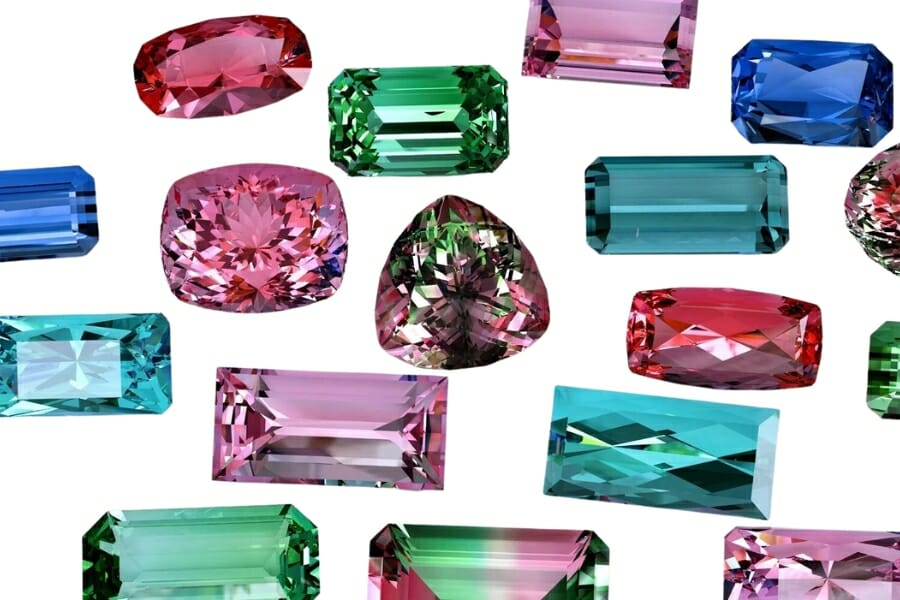
The price of a piece of tourmaline usually depends on a few factors. Here’s a list of some of them:
Color
The depth, hue, and saturation of a tourmaline’s color significantly impact its price. Vibrant, intense colors generally command higher prices, with blues and pinks often more valuable than browns and yellows.
Clarity
Like other gemstones, the fewer inclusions and blemishes a tourmaline has, the more it’s worth. However, some inclusions can actually enhance a stone’s value if they contribute to a unique visual effect, like the “cat’s eye” phenomenon.
Size and Carat Weight
Larger stones, particularly those that maintain good clarity and color, are more valuable than smaller ones. However, price per carat often increases exponentially with size due to the rarity of larger stones.
Cut and Shape
The skill with which a tourmaline is cut can also influence its price. Well-cut stones reflect light beautifully and showcase the gem’s natural colors, while poor cuts may result in color “windows” or reduced brilliance.
Origin
The geographical source can play a role in the value of tourmaline, with stones from renowned locations like Brazil and Afghanistan often fetching higher prices. However, the importance of origin can vary depending on current market trends.
Treatment
Tourmalines that have undergone no treatment like heating or irradiation are generally more valuable. Disclosure of any treatments is crucial in determining a stone’s actual value.
Rarity
Some forms of tourmaline, like Paraíba or certain color-change varieties, are exceedingly rare and can command top dollar.
Market Demand
Current fashion trends and consumer demand can affect the value of certain colors or types of tourmaline. For example, if pink tourmaline becomes trendy, its price could temporarily spike.
Certification
Stones verified for quality by reputable gemological laboratories may receive higher prices, as certification assures the stone’s characteristics and provenance.
Aesthetic Appeal
Sometimes, a tourmaline has a unique quality, like striking color zoning in watermelon tourmaline, that makes it especially desirable and can increase its market value.
Tourmaline Price By Type
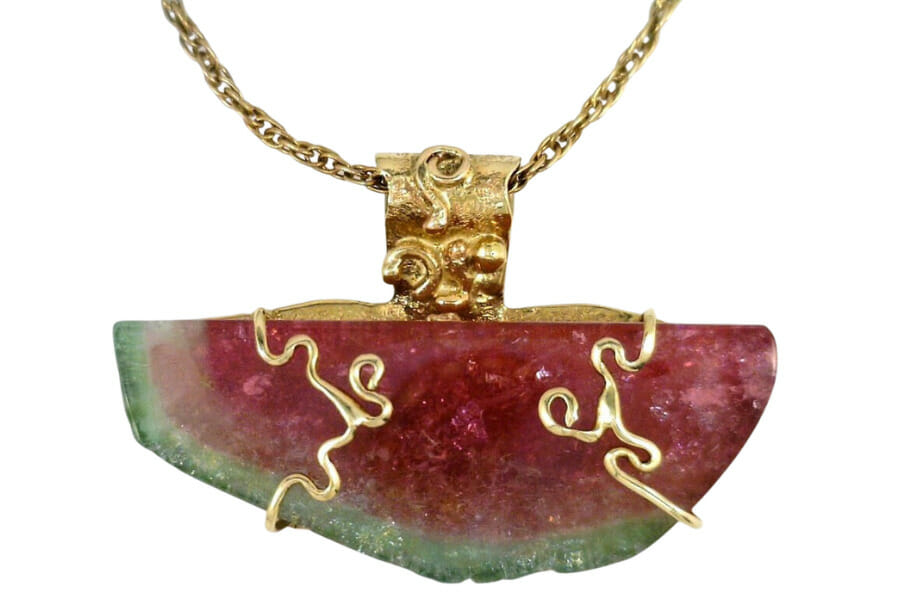
If you want to know how much a tourmaline is worth and how much it costs, you need to know everything about it. The factors are essential in figuring out how much it’s worth.
The prices for the most common types of tourmaline are on the list below.
Tourmaline values by type
| Color | Location | Price (Per Carat) |
| Elbaite | Any | $50 to $10,000 |
| Dravite | Any | $50 to $100 |
| Liddicoatite | Any | $75 to $150 |
| Schorl | Any | $25 to $60 |
| Uvite | Any | $50 to $300 |
| Watermelon Tourmaline | Any | $150 to $450 |
Different kinds of tourmaline have different prices and values. Let’s see what the price of tourmaline is in other units.
Tourmaline pricing by unit of measurement
| Measurement | Price |
| A carat of tourmaline | $20 to $10,000 |
| A gram of tourmaline | $100 to $50,000 |
| An ounce of tourmaline | $2,830 to $1,147,480 |
| A kilogram of tourmaline | $100,000 to $50,000,000 |
| A pound of tourmaline | $45,360 to $22,679,600 |
| A ton of tourmaline | $90,718,500 to $45,359,250,000 |
The Most Expensive Tourmaline
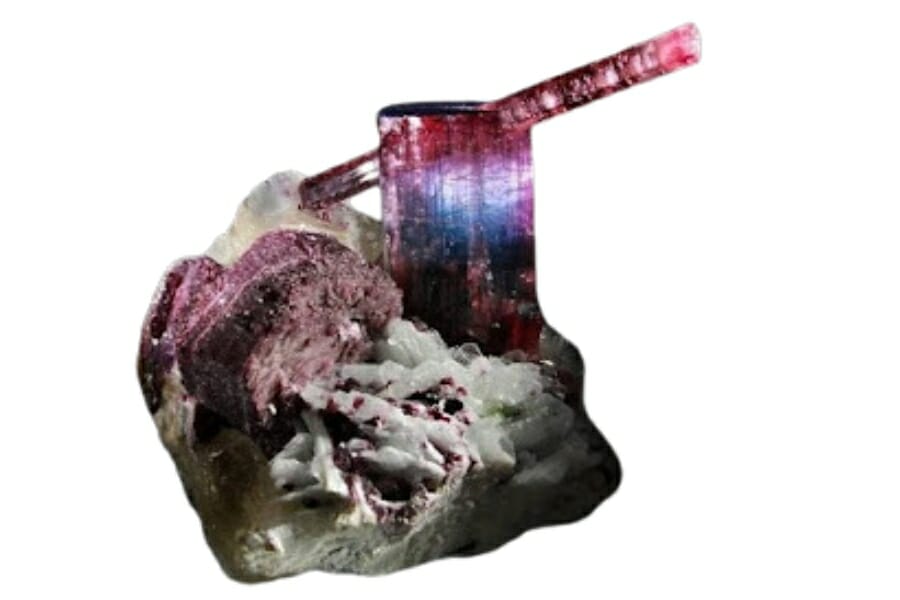
The Great Divide Tourmaline is a famous and very valuable gemstone known for its size, quality, and beautiful mix of colors. In the late 1970s, this amazing tourmaline crystal was found in the Pala mining district in San Diego County, California.
It weighed a whopping 16 kilograms (about 35 pounds) and was about 39 centimeters (about 15 inches) long. One of the most interesting things about it is that it is blue and green, with each color zone clearly defined.
When it comes to tourmaline, larger crystals that are also clear and have good color are usually more valuable, and the Great Divide Tourmaline is no different.
The fact that this beautiful stone is hard to find makes it more expensive. Even though bicolor tourmalines are rare, finding a large, high-quality crystal like the Great Divide Tourmaline is like winning the geological lottery.
The crystal comes from a place with a long history of gems, which adds to its appeal and price. Its high value is also due to its perfect cleavage, few imperfections, and high levels of transparency.
These things make the Great Divide Tourmaline a collector’s dream and one of the most expensive tourmalines ever found, costing $1.2 million.
How To Get An Appraisal On Your Tourmaline
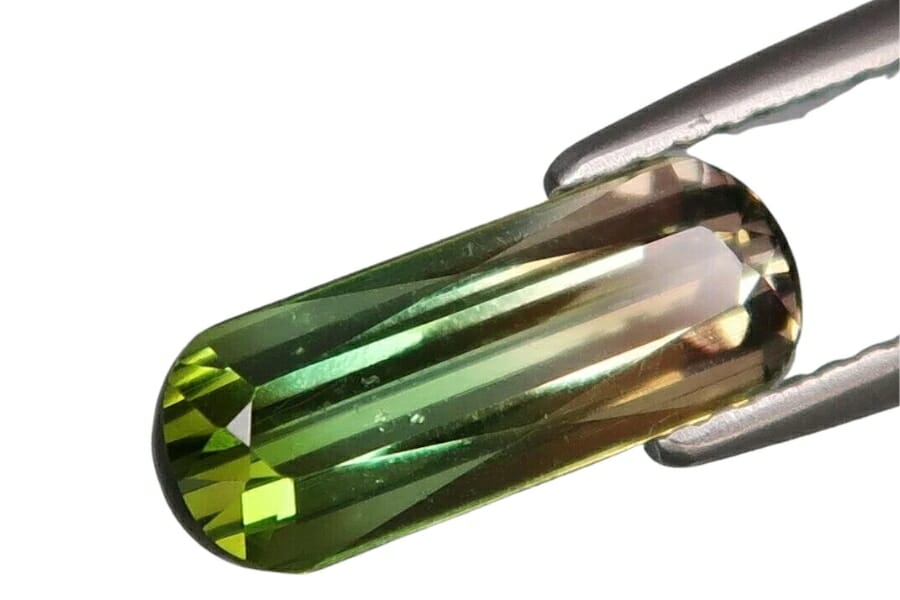
If you want to know how much a tourmaline gemstone is worth on the market, whether to sell it, get it insured, or just for your knowledge, it’s a good idea to appraise it.
Look for professionals certified by reputable groups like the Gemological Institute of America (GIA), the American Gem Society (AGS), or other recognized bodies in your country.
Make sure the appraiser is an expert in colored gemstones. The process of appraising diamonds and colored stones like tourmaline can be different.
Always look at the appraiser’s credentials and what past clients have said about him or her. This step will help you ensure that the professional you hire is qualified and reliable.
Bring any previous appraisals, lab reports, or information about where you got the gemstone to the assessment. Sometimes, where something came from can affect its value.
The appraiser will look at the stone with different tools to measure its weight, size, color, clarity, and other qualities that affect its value. They might also use a refractometer or spectroscope for a more in-depth look.
At the end of the appraisal, you should get a written report with a lot of information about the gemstone and how its value was determined. This report can help with insurance and with possible sales.
Note that gemstone prices can change over time, so if your tourmaline is an investment piece, it’s a good idea to get it revalued every few years.

